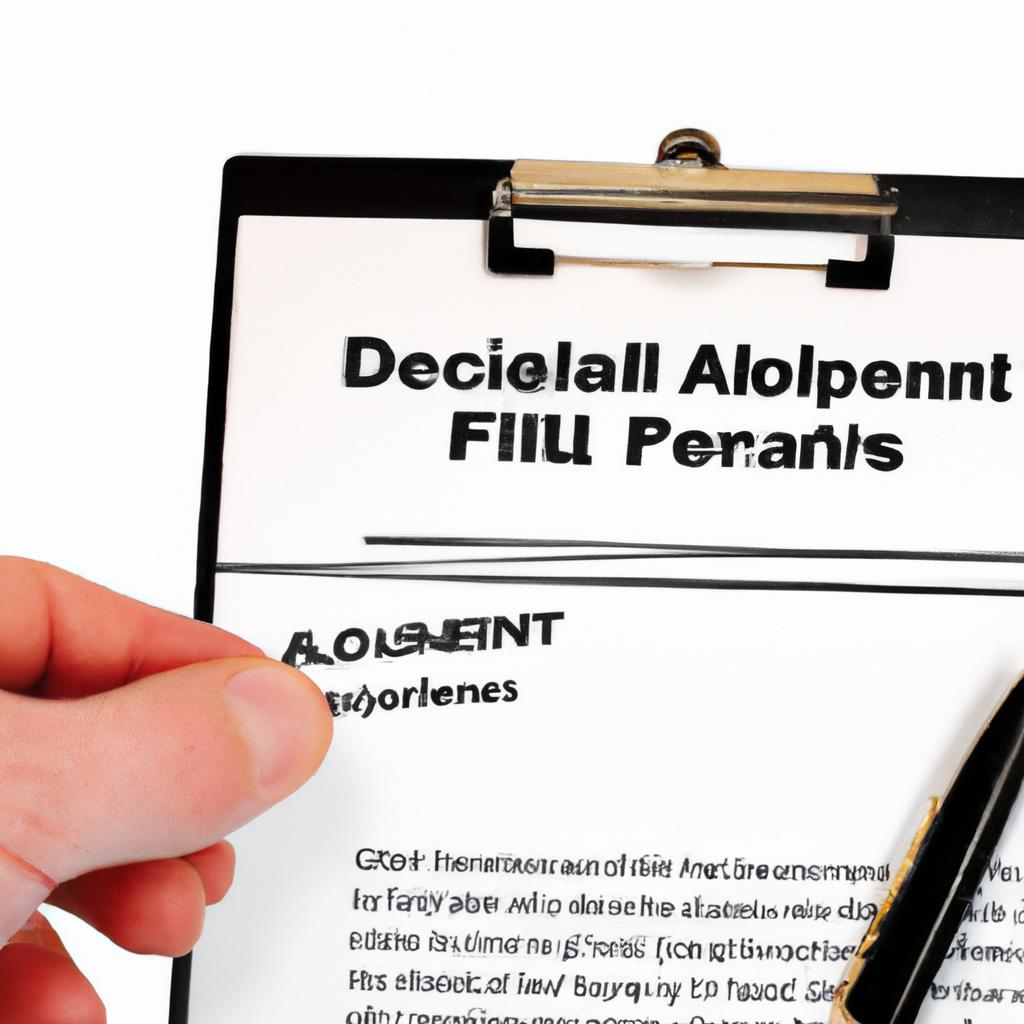In the intricate world of real estate transactions, the swift and strategic execution of a quick claim deed can make all the difference. As seasoned legal experts at Morgan Legal Group in New York City, we know that the transfer of property ownership through a quick claim deed can be a game-changer. In this article, we will guide you through the essential steps and considerations involved in filing a quick claim deed, ensuring a seamless and efficient transfer of property rights. Whether you are a seasoned investor or a first-time homebuyer, our expertise in estate planning, probate, and trusts will provide you with the knowledge and confidence to navigate this pivotal aspect of real estate law.
Understanding Quick Claim Deeds
When it comes to , it is essential to know the ins and outs of this particular legal document. A quick claim deed is a type of deed that transfers ownership of a property from one party to another without any guarantees or warranties. This means that the party transferring the property (known as the grantor) is only relinquishing their ownership rights to the property, without making any promises about the title or condition of the property.
<p>One of the key steps in filing a quick claim deed is to ensure that the document is properly prepared and executed. This involves drafting the deed with all the necessary information, including the names of the grantor and grantee, a legal description of the property, and any other relevant details. Once the deed is prepared, it must be signed in the presence of a notary public to make it legally valid. After the deed is signed and notarized, it must be filed with the appropriate government office to officially transfer the property to the new owner.</p>
Tips for Properly Drafting a Quick Claim Deed
When drafting a quick claim deed, it is essential to ensure that the document is accurate and legally binding. Here are some :
- Include all necessary information: Make sure to include the full names of the grantor and grantee, a detailed description of the property being transferred, and any relevant signatures or notarizations.
- Use clear language: It is important to use language that is easy to understand and free of any ambiguity. Avoid using legalese or complex terminology that may lead to confusion.
By following these tips, you can ensure that your quick claim deed is properly drafted and legally sound. If you have any questions or require assistance with drafting a quick claim deed, don’t hesitate to contact Morgan Legal Group in New York City.

Importance of Consulting with a Legal Professional
When it comes to transferring real estate property, one common method is through a quick claim deed. This legal document allows for the transfer of property from one party to another, typically without any warranties or guarantees. It is important to consult with a legal professional to ensure that the process is carried out correctly and all legal requirements are met.
By consulting with a legal professional, you can ensure that the quick claim deed is prepared and executed properly. A legal professional can also provide guidance on any potential issues that may arise during the transfer process. Additionally, they can advise on any tax implications that may result from the transfer of property. With their expertise, you can have peace of mind knowing that the transfer is legally sound and properly documented.

Potential Pitfalls to Avoid when Filing a Quick Claim Deed
When filing a quick claim deed, it is essential to be aware of potential pitfalls that could arise in the process. One common mistake to avoid is not properly understanding the implications of transferring ownership through a quick claim deed. Unlike a warranty deed, a quick claim deed does not guarantee that the grantor actually owns the property being transferred. Therefore, it is crucial to conduct a thorough title search to confirm ownership and ensure there are no liens or encumbrances on the property.
Another pitfall to watch out for is failing to have the quick claim deed properly executed and notarized. In order for a quick claim deed to be legally binding, it must be signed by the grantor in the presence of a notary public. Failure to follow the proper procedures could result in the deed being challenged or invalidated in the future. It is always best to consult with a qualified real estate attorney to ensure that all legal requirements are met when filing a quick claim deed.
Q&A
Q: What is a quick claim deed and how does it differ from a regular deed?
A: A quick claim deed is a legal document used to transfer ownership of real estate from one party to another. Unlike a warranty deed, a quick claim deed makes no guarantees about the title of the property.
Q: When would someone need to file a quick claim deed?
A: A quick claim deed is typically used in situations where the property transfer is between family members, spouses, or in a non-sale transaction. It is also commonly used to add or remove someone’s name from the property title.
Q: What are the basic steps to filing a quick claim deed?
A: To file a quick claim deed, you first need to obtain a blank form specific to your state. Then, fill out the form with the necessary information, have it notarized, and file it with the county recorder’s office where the property is located.
Q: Are there any potential pitfalls to be aware of when filing a quick claim deed?
A: One potential pitfall is that the grantee (the person receiving the property) does not receive any guarantees about the title from the grantor (the person transferring the property). It’s important to do your due diligence and research the property’s title history before completing the transfer.
Q: How long does it typically take to complete the process of filing a quick claim deed?
A: The process of filing a quick claim deed can vary depending on the state and county where the property is located. Generally, it can take anywhere from a few days to a few weeks to complete the process. It’s always best to check with the county recorder’s office for specific timelines.
Final Thoughts
In conclusion, filing a quick claim deed can be a simple and straightforward process if you follow the necessary steps and guidelines. By familiarizing yourself with the requirements and seeking guidance from legal professionals when needed, you can ensure that the transfer of property ownership is done efficiently and accurately. Remember, the key is to approach the process with a clear understanding of the implications and a willingness to take the necessary steps to protect your interests. So, don’t hesitate to take control of your property transactions and file that quick claim deed today!


